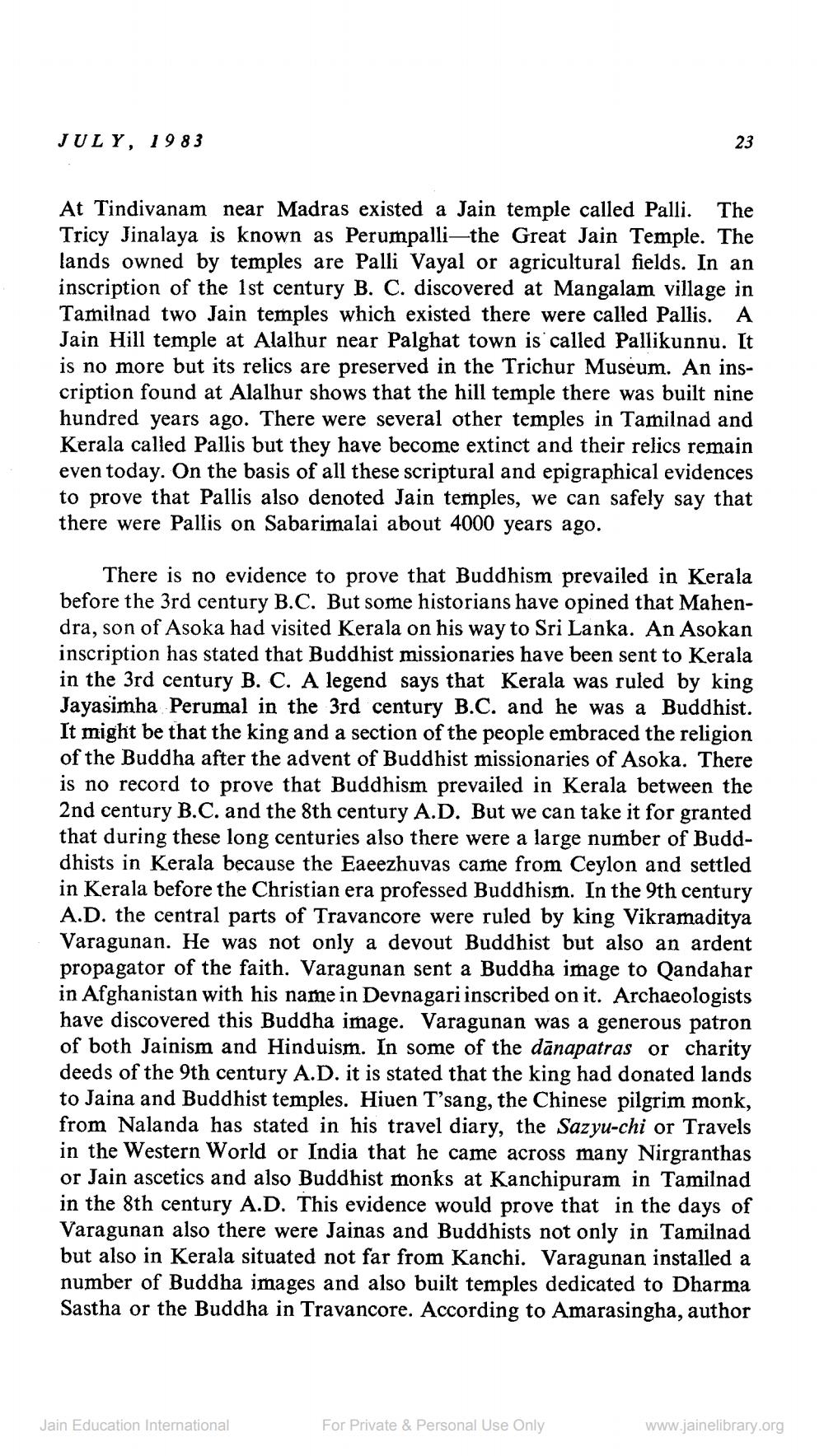________________
JULY, 1983
At Tindivanam near Madras existed a Jain temple called Palli. The Tricy Jinalaya is known as Perumpalli-the Great Jain Temple. The lands owned by temples are Palli Vayal or agricultural fields. In an inscription of the 1st century B. C. discovered at Mangalam village in Tamilnad two Jain temples which existed there were called Pallis. A Jain Hill temple at Alalhur near Palghat town is called Pallikunnu. It is no more but its relics are preserved in the Trichur Museum. An inscription found at Alalhur shows that the hill temple there was built nine hundred years ago. There were several other temples in Tamilnad and Kerala called Pallis but they have become extinct and their relics remain even today. On the basis of all these scriptural and epigraphical evidences to prove that Pallis also denoted Jain temples, we can safely say that there were Pallis on Sabarimalai about 4000 years ago.
23
There is no evidence to prove that Buddhism prevailed in Kerala before the 3rd century B.C. But some historians have opined that Mahendra, son of Asoka had visited Kerala on his way to Sri Lanka. An Asokan inscription has stated that Buddhist missionaries have been sent to Kerala in the 3rd century B. C. A legend says that Kerala was ruled by king Jayasimha Perumal in the 3rd century B.C. and he was a Buddhist. It might be that the king and a section of the people embraced the religion of the Buddha after the advent of Buddhist missionaries of Asoka. There is no record to prove that Buddhism prevailed in Kerala between the 2nd century B.C. and the 8th century A.D. But we can take it for granted that during these long centuries also there were a large number of Budddhists in Kerala because the Eaeezhuvas came from Ceylon and settled in Kerala before the Christian era professed Buddhism. In the 9th century A.D. the central parts of Travancore were ruled by king Vikramaditya Varagunan. He was not only a devout Buddhist but also an ardent propagator of the faith. Varagunan sent a Buddha image to Qandahar in Afghanistan with his name in Devnagari inscribed on it. Archaeologists have discovered this Buddha image. Varagunan was a generous patron of both Jainism and Hinduism. In some of the danapatras or charity deeds of the 9th century A.D. it is stated that the king had donated lands to Jaina and Buddhist temples. Hiuen T'sang, the Chinese pilgrim monk, from Nalanda has stated in his travel diary, the Sazyu-chi or Travels in the Western World or India that he came across many Nirgranthas or Jain ascetics and also Buddhist monks at Kanchipuram in Tamilnad in the 8th century A.D. This evidence would prove that in the days of Varagunan also there were Jainas and Buddhists not only in Tamilnad but also in Kerala situated not far from Kanchi. Varagunan installed a number of Buddha images and also built temples dedicated to Dharma Sastha or the Buddha in Travancore. According to Amarasingha, author
Jain Education International
For Private & Personal Use Only
www.jainelibrary.org




